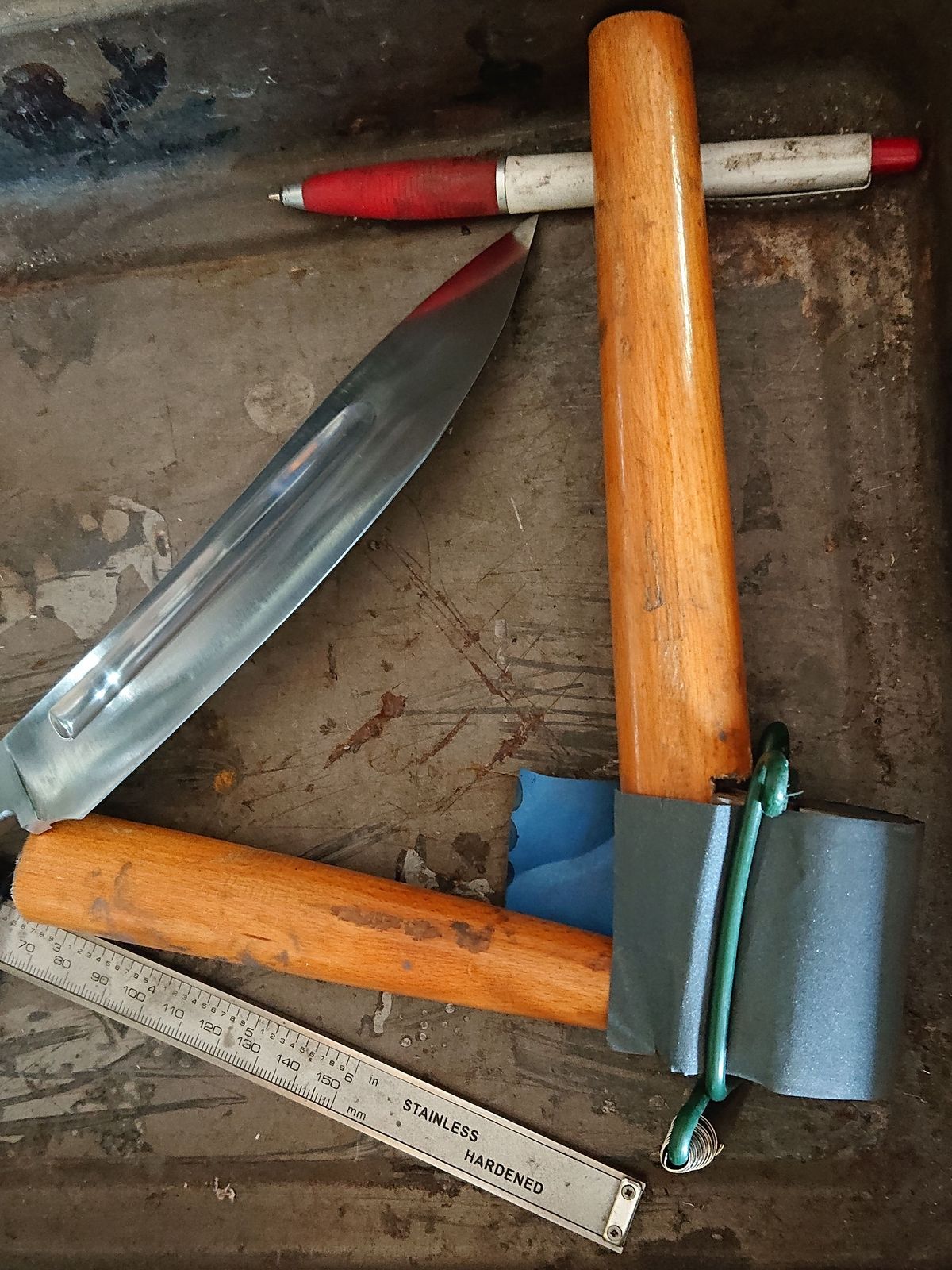I have made twoo puukko. To be honest, I was not a fan of this type of knife at all. I have only decided to make them just as a part of my ongoing knifemaking education. But now I am totally a convert.
The first one has a handle made from birch bark, cow bone, and white brass. It looks a bit like a stacked leather handle but it feels different in the hand. Birchbark can be flattened by boiling it in hot water and pressing it between two boards to cool and dry off, making it into flat hard sheets. They are slightly more brittle than wood, but they do not have any preferred failure direction, so they do not split and break easily.
The second one has a handle from birch wood with a small burl in it. It is not proper burlwood, it was just a piece of firewood that I thought will be interesting. I think I was correct in that surmise. The endcap and bolster are from pakfong.
Both of these knives have just a simple finish to them. The blades’ primary bevels were ground only up to 120 grit and then tumbled after quenching in sand as long as it took to take all the scale off. Bolsters and end caps are not highly polished, as well as the handles. In fact, I took a steel brush to them to roughen the surfaces a bit. And the finish is just several layers of ordinary boiled linseed oil.
I was aiming for a simple, rough-looking sturdy knife as well as a simple, easy-ish manufacturing process. I think I have managed both. I really like these knives and I will make at least somewhat fancy sheaths for them. And I will definitively make more puukko in the future. I also think that this design is ideal for recycling old files into knives, so I will probably do some of that too.














































